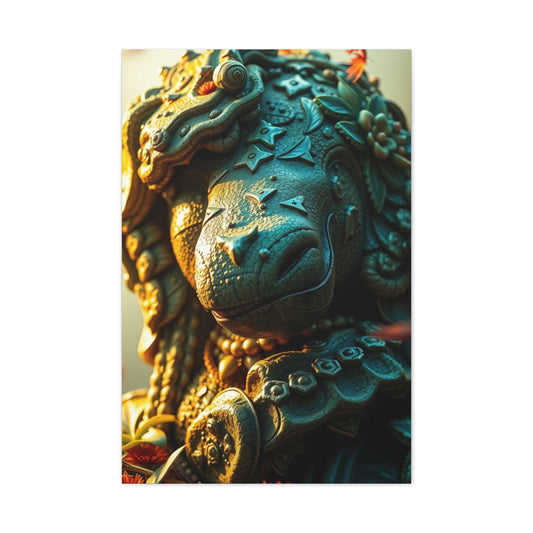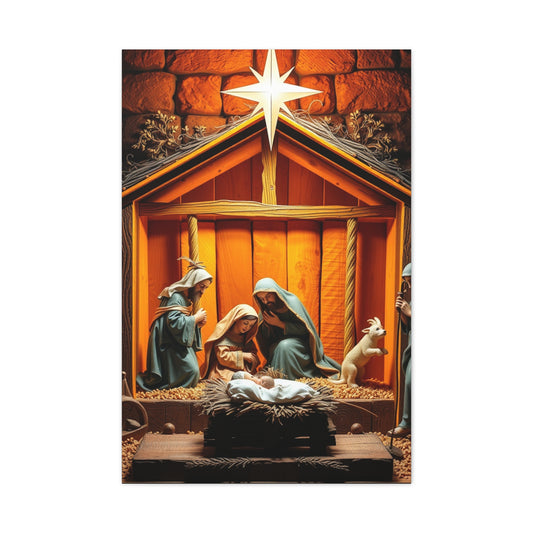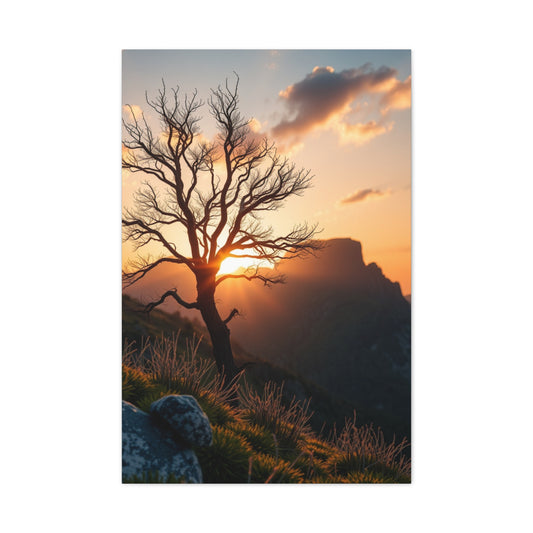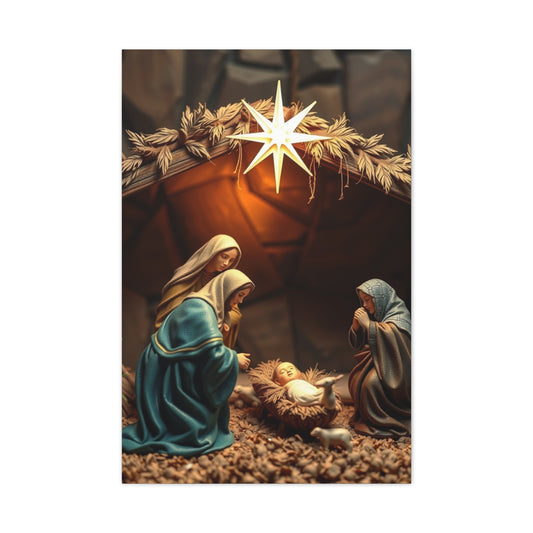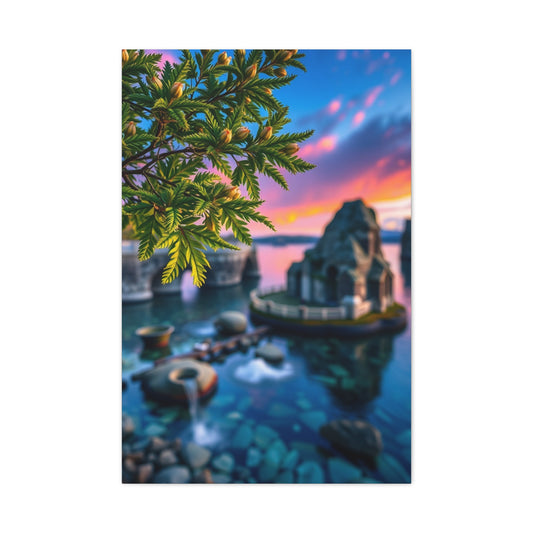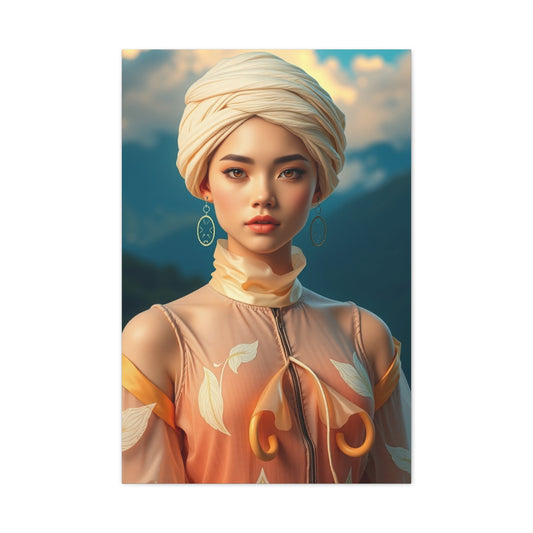Projector photography is an artistic approach that uses projected visuals to enhance portraits and scenes, offering a striking fusion of digital imagery and real-world subjects. By casting designs, textures, or photos directly onto your subject, you can craft immersive, surreal, or even cinematic compositions without relying heavily on post-production. This guide covers everything from choosing the right projector to setting up your camera, managing lighting, and editing your images for polished, professional results.
Selecting the Ideal Projector for Photography: A Detailed Guide for Visual Creators
Choosing a projector for photography might seem straightforward, but it requires more careful thought than picking one for home entertainment or office use. When working with projected visuals in your photo sessions, you're blending digital light and real-world elements to create art. This hybrid process means your equipment needs to meet specific criteria to deliver crisp, vivid, and distortion-free results. Whether you’re capturing surreal portraits or creating layered effects for commercial work, selecting the right projector is a pivotal step.
Photographers integrating projection into their workflow should consider three foundational attributes when evaluating a projector: brightness, clarity, and portability. Each plays a distinct role in determining the visual outcome of your photography. Let’s explore these elements in depth so you can confidently select a projector that elevates, not limits, your creative vision.
Understanding Projector Brightness and Light Output
The first and most critical factor when selecting a projector for photography is brightness, which is measured in lumens. This specification determines how well the projected image will appear in various lighting conditions. If your projection environment includes even a modest amount of ambient light, a low-lumen projector simply won’t deliver satisfactory results.
For most photography applications, a projector with a brightness rating of at least 3,500 lumens is strongly recommended. This level of intensity provides enough light to display vivid imagery on your subject or background, even when total darkness isn’t achievable. Higher brightness also enhances contrast and color vibrancy, making your images appear more dynamic and lifelike on skin, fabric, walls, or other surfaces.
If you're working in a controlled, dark environment—such as a studio with blackout curtains—a projector with 2,000 to 2,500 lumens can still be effective. However, you’ll need to adjust your camera settings accordingly. This usually means using a higher ISO, a wider aperture, or a longer exposure time, all of which can introduce image noise or motion blur. While manageable, these factors add complexity and may restrict your shooting flexibility.
|
Related Catagories: |
Moreover, keep in mind that brightness can be affected by projection distance. As you move the projector farther away to create a larger image, the light becomes more diffused, diminishing the effective brightness. Therefore, having a higher lumen rating gives you more versatility in terms of distance and scale.
Evaluating Image Clarity and Resolution
The second core component in projector performance is image clarity. A projection that lacks sharpness will appear muddy or pixelated when cast onto your subject, undermining the professional quality of your photography. While many consumers are drawn to 4K resolution, the truth is that ultra-high definition isn't necessary for most projection photography. However, the projected image must still appear clean, well-defined, and free from distracting artifacts.
The key is to select a projector that offers solid native resolution—ideally 720p at minimum, though 1080p is preferable. Avoid models that rely on digital upscaling to simulate higher resolution, as these can often result in distorted or ghosted edges. For projects that involve detailed visual elements like typography, architectural lines, or abstract digital art, a projector with good native clarity ensures that these nuances remain crisp when photographed.
Also, evaluate how your chosen projector handles color reproduction. Some low-budget models may have poor color accuracy or exhibit banding when displaying gradients or vivid hues. Look for projectors with reliable color processing technology and manual focus adjustment, as these features allow you to optimize image quality based on the distance to the subject or wall.
Finally, factor in the lens quality. Just like camera lenses, projector lenses vary in precision. An inferior lens may lead to edge softness or focal inconsistencies across the projection. If possible, test the projector in person or read user reviews specifically related to projection sharpness in practical environments like studios or low-light rooms.
Importance of Portability and Setup Flexibility
Beyond brightness and clarity, portability plays a practical yet often overlooked role in projector photography. A lightweight, compact projector offers greater creative freedom, allowing you to change shooting locations, reposition the beam, or experiment with projection angles without being limited by bulk or fragility.
Portability also influences how quickly you can set up or modify your scene. This is particularly important in creative shoots where subjects move between setups or where spontaneous ideas require rapid adjustment. Larger, stationary projectors may offer strong performance specs, but they’re often difficult to mount on tripods or fine-tune during a shoot.
Look for projectors that include a tripod thread or mounting option, which allows for secure and adjustable placement. This is invaluable for working at various angles—whether you're casting projections from above, from the side, or directly from behind the camera. The ability to tilt or rotate the projector with ease adds flexibility when working with dynamic compositions or unique backgrounds.
Another point worth mentioning is the fan noise. Some projectors, particularly powerful models, have built-in cooling systems that can become audibly distracting. While this may not affect image quality directly, excessive noise could interfere with certain types of portrait shoots, especially in video or audio-sensitive settings. If silence is important in your workflow, research decibel ratings or user feedback regarding operational volume.
Connectivity and Compatibility Considerations
While not part of the core trio of brightness, clarity, and portability, connectivity should also be on your radar. The ability to connect your projector seamlessly to a laptop, tablet, or media player is crucial for fast and smooth operation.
Ensure the projector includes modern input options like HDMI, USB, or even wireless casting capabilities. These features allow you to cycle through visuals quickly or project animations without additional converters or dongles. Compatibility with common file formats and reliable remote control functionality are also worth prioritizing for smoother transitions during your shoot.
Some photographers also choose projectors that support SD cards or media playback directly from a USB drive. This can streamline workflows for those who prefer not to tether their laptops to the projector or who want a more mobile shooting setup.
Finding the Right Balance for Your Creative Needs
Ultimately, the best projector for photography is the one that aligns with your creative goals, technical demands, and shooting environment. If you're prioritizing mobility and small-scale shoots, a compact, high-brightness mini projector might be ideal. If you're working in a dedicated studio or creating larger-than-life visuals, a full-sized projector with high-definition resolution and multiple mounting options may suit you better.
Don’t make your decision based solely on advertised specs. Read in-depth reviews, compare sample images, and, if possible, test a unit in-store or borrow one before committing. Your projector will become an essential part of your visual toolkit—one that directly shapes the texture, tone, and impact of your photographic output.
Curating Images for Creative Projection: Building Visual Stories with Light
Projector photography is as much about the projected content as it is about the subject in front of the lens. The image you choose to cast shapes the narrative, atmosphere, and emotional depth of the final photograph. Whether you're aiming for ethereal dreamscapes or abstract distortions, image selection plays a foundational role in creating visual harmony between projection and portrait.
Unlike traditional photography that depends largely on lighting and composition, projector-based shoots involve layering visual elements on top of real-world textures, such as skin, clothing, fabric, or walls. This makes image curation an artistic process in its own right. It requires intention, style awareness, and an understanding of how shapes, colors, and negative space interact when wrapped around three-dimensional forms.
To help you develop a stronger projection workflow, this guide explores everything you need to know about sourcing, formatting, and organizing visuals to ensure creative success with every session.
Why Image Selection Matters in Projection Photography
The core of projection photography lies in how digital visuals interact with physical surfaces. Every curve, fold, and texture in your subject distorts and reframes the projected image. Because of this, not all graphics will translate well in-camera.
A powerful projection image needs to complement the scene—not compete with it. Poorly chosen visuals can result in cluttered compositions, lost subject definition, or unintended distractions. On the other hand, a thoughtfully curated image can elevate a simple portrait into something immersive, symbolic, or otherworldly.
Choosing Backgrounds with Purpose
When building your projection image library, focus on selecting backgrounds that allow your subject to remain prominent. Scenes with negative space, such as blue skies, minimal landscapes, or cloudy horizons, create breathing room in your frame. These types of visuals offer structure without overwhelming the model or environment.
Galaxies, sunsets, and wide-open fields provide stunning atmospheric effects while still being adaptable to a variety of portrait types. The more minimal the image, the more versatile it becomes when projected over different poses or positions.
Keep color contrast in mind as well. For example, projecting light blue skies onto a subject wearing a white outfit may cause blending or loss of definition. Ensure the hues in your projection enhance your subject’s outline rather than obscure it.
The Impact of Patterns and Repetition
In contrast to scenic backdrops, abstract patterns deliver a bold and often surreal visual statement. Elements such as fractals, grids, zigzags, or neon spirals offer texture and rhythm to a scene. When projected onto a human figure, these repetitive designs morph along the body's contours, turning skin into a living canvas.
These types of visuals are ideal for high-concept editorials, creative fashion shoots, or modern art portraiture. Their geometric precision contrasts beautifully with organic human form, highlighting muscle lines, facial structure, or the fluidity of movement in the frame.
Just remember that stronger patterns may dominate the scene if not used carefully. If your goal is emotional expression or subtle storytelling, lean toward gentler designs like smoke trails, ink blots, or watercolor strokes rather than high-contrast stripes or checkers.
Color Psychology and Mood Setting
Beyond form and structure, color is an essential element when curating projection images. It’s not just about what looks good; it's about what feels right. Warm tones like amber, peach, and gold evoke comfort, nostalgia, or intimacy. Cool colors such as cobalt, emerald, and violet often convey mystery, introspection, or futuristic tones.
Projecting red may suggest intensity or passion, while blue may offer calmness or melancholy. Consider the story you're trying to tell, and choose visuals with a color palette that reinforces the emotional tone.
Additionally, take into account how your camera will render these hues. Projected colors may look different depending on exposure, white balance, and lens characteristics. Perform test shots and tweak your visuals accordingly to maintain color fidelity.
File Types That Optimize Projection Quality
Not all image file types are created equal when it comes to projection photography. For most scenic or full-frame images, JPEG files are perfectly suitable. They maintain good resolution while remaining lightweight, ensuring smooth playback and transitions, especially when projecting video or animated sequences.
However, when working with logos, icons, typography, or layered artwork, opt for PNG format. PNGs support transparency, which is particularly important if you want to isolate elements without projecting unwanted background fills like white or black. This allows your design to float naturally over your subject or scene, creating a cleaner visual integration.
Avoid using compressed or low-resolution images, as pixelation becomes more apparent when stretched across surfaces. Aim for high-resolution files, especially if you plan to project larger than a standard screen or work in close-up portrait scenarios.
Organizing Your Visual Library for Efficiency
When you're mid-session, the last thing you want is to fumble through cluttered folders trying to locate the right file. Preparing and organizing your visuals in advance ensures a smoother, more creative workflow.
Create folders grouped by theme, mood, or shoot concept. You might have one collection for nature textures, another for minimal abstracts, and one dedicated to video loops or motion graphics. Name files clearly and consistently to make them easy to identify on-screen.
Consider creating a quick-access playlist using media software or presentation tools to cue up your projection content in the correct sequence. This is especially helpful when working with multiple projection layers or collaborating with stylists and art directors on set.
Dynamic Visual Sources for Expanded Creativity
If you're looking to build a more diverse image library, don’t rely solely on stock images. You can create your own projections using graphic design software, photography edits, or even screenshots from your video editing timeline. This approach allows you to tailor designs to your subject’s body language, wardrobe, or the shoot’s overall theme.
You can also find creative assets through public domain repositories, 3D rendering software, or even AI-generated art platforms. Just ensure that any visuals used are high enough in resolution and formatted correctly for display on your specific projector.
Animated visuals or looping video sequences can add kinetic energy to your shoot. While more technically demanding, they open up opportunities for blending movement and stillness in ways that traditional photography rarely offers.
Preparing for Subject Interaction
Once your visuals are curated, it’s essential to think about how they will interact with the person or object being photographed. Place the projection in such a way that it aligns with the body or composition. Use test projections on a dummy or stand-in to examine how the light hits curved surfaces or fabrics.
Keep the design’s focal point in sync with your subject’s facial features or pose. For instance, if you’re projecting a flower, you might want its center to rest on the model’s heart or forehead. Strategic alignment can add layers of symbolic meaning or strengthen the compositional structure.
Also consider how shadows, folds, and clothing texture will affect the final look. Sometimes the most subtle shift in projection angle can transform an ordinary composition into a profound image.
Preparing Your Shooting Space for Projection Photography: A Complete Guide to Optimizing Light, Surfaces, and Setup
The space in which you choose to shoot plays a critical role in determining the quality and impact of your projection photography. Unlike conventional lighting setups that depend primarily on brightness and shadow control, projection-based shoots require thoughtful planning around darkness, surface texture, and spatial positioning. The goal is to create a controlled environment where light can be sculpted, directed, and layered through a digital projector to produce vibrant, precise, and creative results.
This section will walk you through how to transform any room—be it a professional studio, home office, or makeshift creative corner—into a suitable backdrop for projector photography. From ambient light management to surface preparation and projector placement, these insights will help you make the most of your tools and bring your artistic vision to life.
Why Environmental Control Matters
Projection photography thrives in low-light conditions. Even a sliver of ambient light can interfere with the clarity of the projected visuals, softening their edges, muting their colors, and diluting the contrast between light and shadow. This is because digital projectors are designed to function most effectively in darkness, where there’s little to no competing illumination.
Whether you’re using a high-lumen projector or a modest entry-level model, keeping your shooting area dark will dramatically improve the perceived sharpness and intensity of your projections. Streetlights outside a window, light leaking through doorways, or even illuminated monitor screens can undermine the impact of your image.
To optimize your environment, choose a room that you can darken completely. If you're in a space with windows, use blackout curtains or thick fabrics to block natural light. Tape down any gaps that might allow light to creep in. If your room has unavoidable ambient light sources, position your projector so that the projection surface is shielded from those intrusions as much as possible.
Selecting the Right Projection Surface
The surface onto which you project will directly influence the texture, reflectivity, and tonal richness of the final image. A flat, light-colored surface—such as a white or off-white wall—is the most dependable option for clean, sharp results. This kind of backdrop reflects light evenly and minimizes distortion, allowing the projected visuals to maintain their original shape and detail.
However, if you're aiming for more artistic experimentation, consider projecting onto less conventional materials. Textured curtains, printed fabrics, brick walls, or even organic surfaces like wooden panels or flowing drapes can add visual complexity. These surfaces alter the way light is absorbed and reflected, often producing interesting highlights, distortions, or diffusion patterns.
For example, projecting onto velvet fabric will result in a soft, painterly look, while glossy surfaces can cause color blooming or light scatter. Each material has its own character, and part of the creative journey is learning how different textures interact with projected visuals. When working with irregular surfaces, test your projection first, adjusting contrast or brightness levels to ensure your design remains visible and coherent.
Projector Placement and Image Scaling
How far your projector is placed from the surface will determine both the size and sharpness of the projected image. If you want a tight, concentrated projection, position the projector closer to the wall—around four to five feet away. This results in higher light intensity, enhanced color saturation, and minimal edge blur.
If you prefer a broader projection that spans a larger portion of the subject or environment, move the projector back to around eight feet or more. Keep in mind that as the image grows, its brightness will spread out, reducing overall intensity. You may need to compensate by increasing ISO on your camera or using higher-lumen projectors for wider shots.
Short throw projectors can project large images from very short distances and are useful for working in compact environments. On the other hand, standard throw projectors require more distance but often offer better image control at large sizes. Always match your projection scale to your scene’s composition and available space.
Mounting and Adjusting the Projector
Stability is vital during any projection-based shoot. A slight shift in projector angle or height can distort the image or cause alignment issues. For this reason, mount your projector on a tripod, light stand, or dedicated table to ensure precision. Many portable projectors come with built-in tripod sockets, making setup more convenient for small-space studios or location work.
Once positioned, use the projector’s focus ring to sharpen the projected image. This control typically sits near the lens and allows you to bring the projection into crisp alignment. For best results, fine-tune your focus with your subject already in place, so you can see exactly how the projection behaves on the actual surface it will hit.
|
Related Catagories: |
After focus is set, adjust the keystone correction. This feature corrects the trapezoidal distortion that occurs when a projector is not perfectly perpendicular to the wall or surface. Manual and digital keystone controls allow you to straighten the projection, ensuring that your visuals don’t appear warped or skewed in your camera’s frame.
Be sure to lock in the settings before shooting, as movement or jostling can affect focus and keystone adjustments. Tape down cables or stands to avoid accidental shifts mid-shoot.
Device Connection and Image Delivery
Once your projector is physically in place and calibrated, it’s time to deliver your visuals. Most projectors today support HDMI input, making it easy to connect directly to a laptop, media player, or streaming device. Ensure your content is properly formatted for display—typically in widescreen 16:9 ratio for optimal coverage.
Activate screen mirroring, presentation mode, or extended display settings on your device to control how visuals are delivered. If you’re projecting still images, consider using a presentation app or image viewer in full-screen mode to avoid desktop clutter showing up in the projection. For video or animated visuals, ensure smooth playback by preloading files and closing background apps that may interfere.
If your projector supports USB input or SD cards, you can also load your files directly onto removable media and bypass the need for a connected laptop altogether. This can streamline your workflow, especially in mobile setups or when shooting outdoors.
Optimizing for Photography
With your shooting space prepared, the final step is to test how your camera reacts to the environment. Take a few sample shots and adjust your camera settings for optimal exposure. Because projector light is generally softer than traditional photographic lighting, you may need to increase ISO, open your aperture, or slow your shutter speed to achieve a proper balance.
Position your subject so that the projection lands on them evenly, and avoid casting shadows that obscure important parts of the image. If necessary, reposition your subject or camera to eliminate obstruction.
Also consider whether any secondary light sources are needed. While projection photography is typically done with minimal additional lighting, using a dim fill light or bounce card can help lift shadows without washing out the projected visuals.
Optimizing Your Camera for Projection Photography: Settings, Lenses, and Practical Adjustments
Projection photography introduces a captivating blend of light and composition that challenges conventional camera settings. Because the primary source of illumination is a projector—which emits much softer and lower-intensity light compared to studio strobes or continuous LED lights—your camera needs to be adjusted specifically for low-light environments. Success in this technique often hinges on precise exposure, creative control, and technical flexibility.
Understanding how to tune your camera for this specific setup will allow you to maintain detail, color, and sharpness while avoiding underexposure, blur, or unwanted noise. Whether you're capturing abstract portraits or storytelling visuals projected onto textured surfaces, the following adjustments will help you make the most of your setup.
Understanding the Nature of Projection Light
Digital projectors are designed for visual display in darkened rooms, not for lighting photographic scenes. Unlike high-powered flash units, projectors don’t emit short, intense bursts of light. Instead, they cast a consistent beam that’s relatively dim compared to artificial photo lighting. This continuous light must be treated more like natural twilight—soft, gentle, and not sufficient for fast-action photography without specific accommodations.
The softness of projector light contributes to its aesthetic charm, but it also requires slower shutter speeds, wider apertures, and increased sensor sensitivity. If not handled properly, these factors can lead to grainy, blurry, or flat-looking images. Proper camera settings ensure that the delicate nature of the projected visuals translates effectively into your final photo.
Increasing ISO for Better Exposure
Your first step in adapting to low-light projection is adjusting your ISO settings. In most standard lighting setups, photographers try to keep ISO low to maintain sharpness and minimize noise. But in projection photography, a higher ISO is often necessary—and even desirable in some cases.
Start by raising your ISO to 1000, 1600, or even 3200 depending on your camera’s low-light performance. Modern mirrorless and DSLR cameras are quite capable of handling higher ISO levels without significant quality degradation. Grain, when used creatively, can enhance the visual texture of projection-based images. It adds a filmic or documentary style, which complements the dreamy or experimental nature of projected visuals.
That said, be mindful of the trade-offs. Higher ISO settings can reduce dynamic range and affect color fidelity, particularly in shadow areas. Use your histogram and test shots to monitor how your sensor is responding. If detail in shadows or midtones is getting lost, dial back slightly and balance your exposure using aperture and shutter speed adjustments.
Aperture Selection: Letting in Maximum Light
Wide apertures are essential in projection photography. The wider your aperture, the more light your lens can gather, which is critical when working with dim projection. Use prime lenses with maximum apertures like f/1.2, f/1.4, or f/1.8 for optimal performance.
These lenses not only help achieve correct exposure without cranking ISO to extreme levels, but they also produce a shallow depth of field that adds visual separation between your subject and background. This soft focus can enhance the dreamlike quality of projected textures and colors, drawing the viewer’s eye to key areas in your composition.
If you're using a zoom lens with a variable aperture such as f/3.5–5.6, be aware that it will limit your light intake, especially at the longer end. In this case, consider using a tripod and longer shutter speeds to counterbalance the narrower aperture. Alternatively, invest in a fixed-aperture lens or a dedicated low-light prime for more creative freedom.
Shutter Speed Considerations
Shutter speed in projection photography must be carefully controlled to avoid motion blur while maintaining sufficient exposure. If you're using manual mode, begin by setting your shutter speed between 1/60 and 1/100 of a second. This range typically allows you to handhold your camera without noticeable shake, while still gathering enough light from the projector.
Avoid dropping below 1/60 unless your subject is perfectly still or you're using a tripod. Longer exposures can introduce ghosting if your subject moves, which may or may not be desired depending on your artistic intent.
For static scenes or when incorporating intentional blur, you can extend your shutter speed up to 1/30 or slower. This is often used creatively in experimental setups where subject movement or projection shifts contribute to the composition. When working with animated or video projections, slightly slower shutter speeds can capture blended frames, creating abstract textures.
Choosing the Right Exposure Mode
When shooting projection photography, you can use either manual mode or aperture priority, depending on your confidence level and the lighting consistency of the scene.
In aperture priority, you choose your f-stop, and the camera automatically adjusts shutter speed. This is ideal for beginners or fast-paced setups where lighting remains constant. Set your aperture to its widest value and monitor your shutter speed to ensure it doesn’t drop too low.
Manual mode offers more control and is often preferred in projection work. Set your aperture and shutter speed to your liking, then adjust ISO to fine-tune exposure. This allows for consistency across multiple frames and helps avoid exposure shifts caused by automatic metering misinterpreting the projection light.
Leveraging Tripods for Sharpness
Because of the lower light levels, using a tripod becomes essential for maintaining sharpness, especially if your lens is not particularly fast. A stable platform ensures you can shoot at slower shutter speeds without introducing camera shake. It also helps you maintain framing accuracy when working with carefully aligned projections or composed backgrounds.
Tripods also give you freedom to direct your attention to posing, lighting, and projection adjustment rather than worrying about holding the camera steady. Combined with a remote shutter or self-timer, a tripod minimizes the risk of motion blur entirely.
Metering and White Balance
Digital projectors often cast light with slight tints depending on the image being projected, so white balance can vary dramatically. It’s best to shoot in RAW so you can correct color temperature in post-processing. If you must use a preset, choose one that closely matches the dominant color tone of your projection or try a custom white balance using a neutral reference image.
Spot metering or center-weighted metering is typically more effective than evaluative metering in projection photography. It allows your camera to prioritize exposure based on your subject rather than the entire scene, which may include extreme brightness or darkness from the projection image.
Use the camera’s histogram to double-check your exposure, especially since projection light may fool the viewfinder or LCD preview into appearing brighter or darker than it truly is.
Additional Practical Tips
Use manual focus when possible. Auto-focus systems may struggle in projection-based setups due to low light and varying contrast levels across your subject’s face or background. Zoom in with live view to fine-tune focus manually and ensure critical sharpness, particularly on the eyes.
Experiment with how projected visuals wrap around different surfaces, facial angles, and expressions. Every slight change in body position or camera perspective alters how the light plays with form, adding dynamic interest and creative potential.
Test your settings in advance and save presets if your camera supports them. This way, you can quickly switch between different setups or recall a baseline configuration after making creative adjustments.
Controlling Shadows and Composition
Because the projector is a direct light source, it's easy to accidentally block the beam and cast unwanted shadows. Avoid standing between the projector and the subject whenever possible.
For a straight-on perspective, position your camera behind the projector and use a telephoto lens to zoom in on your subject. This ensures that your body doesn’t interfere with the projection while still allowing you to capture tightly framed portraits.
If you're using a shorter lens, explore angles from the side or below the projection beam. These can also yield dynamic results and allow for creative perspectives.
Use a tripod to keep your camera steady, especially when using slower shutter speeds. Have your subject maintain a pose or stay as still as possible during the exposure.
Advanced Techniques for Artistic Results
Once you’re confident with the fundamentals, you can begin experimenting with creative techniques that go beyond static projection.
One approach is to use long exposure times. Set your camera to a shutter speed between 1/15 and 30 seconds and have your subject move slightly during the exposure. This technique creates a ghostlike or fluid motion effect, with streaks and trails that suggest movement through the projected light.
Another method involves cinematic projection. Think of classic film scenes where actors sit in front of a projected driving background. You can replicate that look by placing a landscape, cityscape, or abstract video behind your subject and then lighting them separately with a dim lamp or LED light. This makes it appear as though your subject exists in an entirely different world.
Experiment with different projection surfaces. Try casting your visuals onto hanging sheets, textured wallpaper, reflective surfaces, or even foggy glass. These can dramatically change how the light behaves and introduce surprising visual elements to your scene.
Enhancing Your Photos in Post-Production
Projected images may appear slightly hazy or underexposed straight from the camera. Post-processing helps restore color, contrast, and clarity to bring out the best in your shots.
Begin with basic adjustments to exposure and contrast. Lift the shadows slightly and reduce highlights if needed. Adjust the white balance to match the tones you intended to capture during your shoot.
Use clarity and texture sliders to emphasize fine details in the projected design. If the image looks foggy or washed out, apply a small amount of dehazing. This can recover vibrance and depth lost due to light scatter.
Since most projection shoots require high ISO, use noise reduction tools carefully. Don’t eliminate all grain—too much noise reduction can remove essential detail and leave the image looking artificial. Find a balance that retains texture while softening unwanted noise.
Color grading can also elevate your photo. Use split toning, color balance, or selective color tools to match the emotion or style you envisioned. For dreamy vibes, warm tones and soft pastels work well. For a futuristic or edgy aesthetic, cool tones or vivid neon colors are more appropriate.
Bringing It All Together
Projection photography is a boundary-breaking genre that combines the spontaneity of analog experimentation with the precision of digital imagery. It allows photographers to create immersive and imaginative visuals using minimal equipment and unlimited creativity.
Once you've learned to manage your lighting conditions, camera settings, and projection angles, you’ll be able to execute a variety of looks—ranging from clean, abstract designs to cinematic or dreamlike portraits. The best part is that there's no one "correct" way to do it. Every setup, image, and lighting change introduces a new possibility.
Let your curiosity drive your experimentation. Try different image types, surfaces, or camera angles each time you shoot. With patience and practice, you’ll begin to develop a personal style within this versatile photographic niche.











